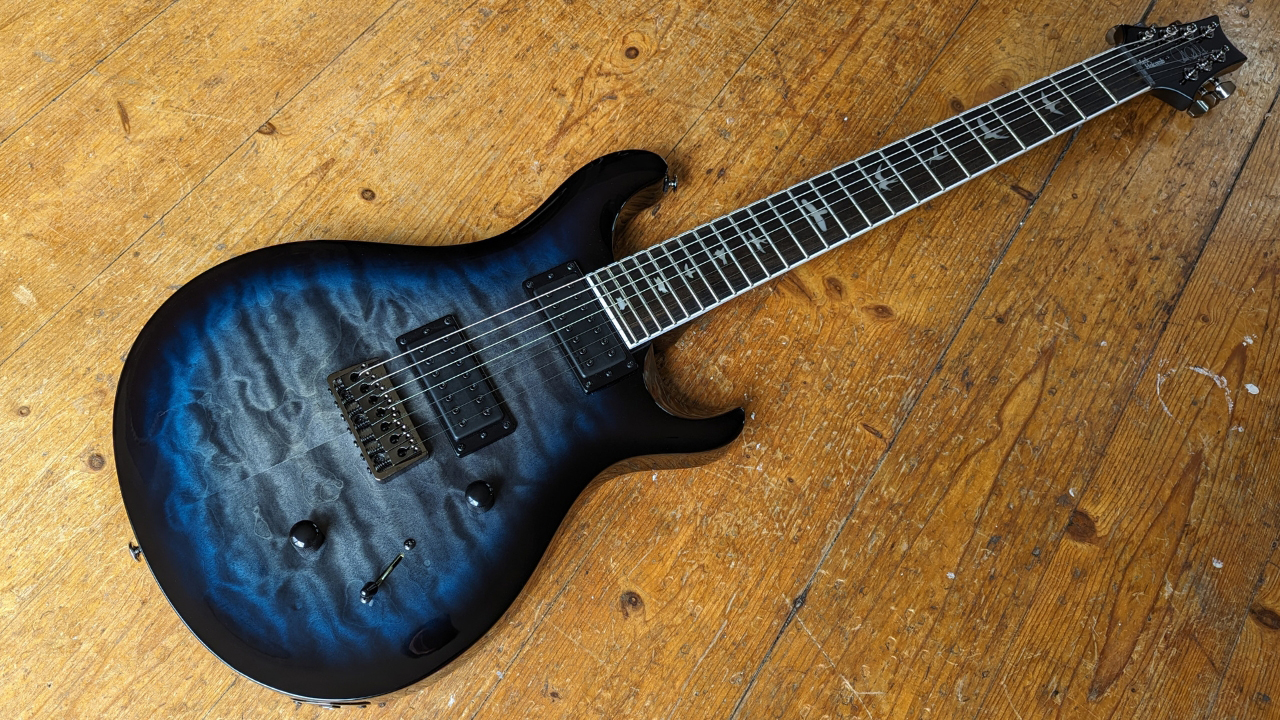Guitar World Verdict
A superb 7-string guitar that’s got a lot more going for it than just modern metal tones, the PRS SE Mark Holcomb SVN is an eminently playable extended-range guitar with a surprising amount of tonal versatility.
Pros
- +
Surprisingly versatile pickups.
- +
Ultra playable satin neck.
- +
Stunning build quality.
Cons
- -
Pickups might not be high output enough for some.
You can trust Guitar World
As one-third of Periphery’s triumvirate guitar attack, it’s safe to say Mark Holcomb knows a thing or two about crushingly heavy riffing. Periphery has fast become one of the most influential bands in the world of progressive metal and one of the flag-bearers of a sound affectionately known as ‘djent’ alongside bands like Meshuggah, Animals as Leaders, Tesseract, and many more.
Prototyped back in late 2017/early 2018, the PRS SE Mark Holcomb SVN resulted from a close collaboration in design between Mark and the Maryland-based guitar giant. An affordable version of his core signature model, it’s one of few 7-string guitars in the PRS lineup, making it a unique proposition for players who want an extended-range guitar that isn’t just a shred or metal machine.
Mark played the guitar frequently while on tour during the prototyping phase, allowing him to have a very personal input on the design, relaying improvements back to PRS that would make the final model. This approach should hopefully make for a well-rounded guitar, and one equally good for playing live.
As the owner of several seven-string guitars, and a frequent user of baritone guitars in my band, I’m pretty well placed to see how the SVN holds up against the competition. This guitar will obviously be good at heavy riffing thanks to its heritage, but can it do anything other than that? I put it through its paces to find out how it fares in a variety of playing styles and genre types, testing it out at home and in the rehearsal room to get the answers.
PRS SE Mark Holcomb SVN review: Features
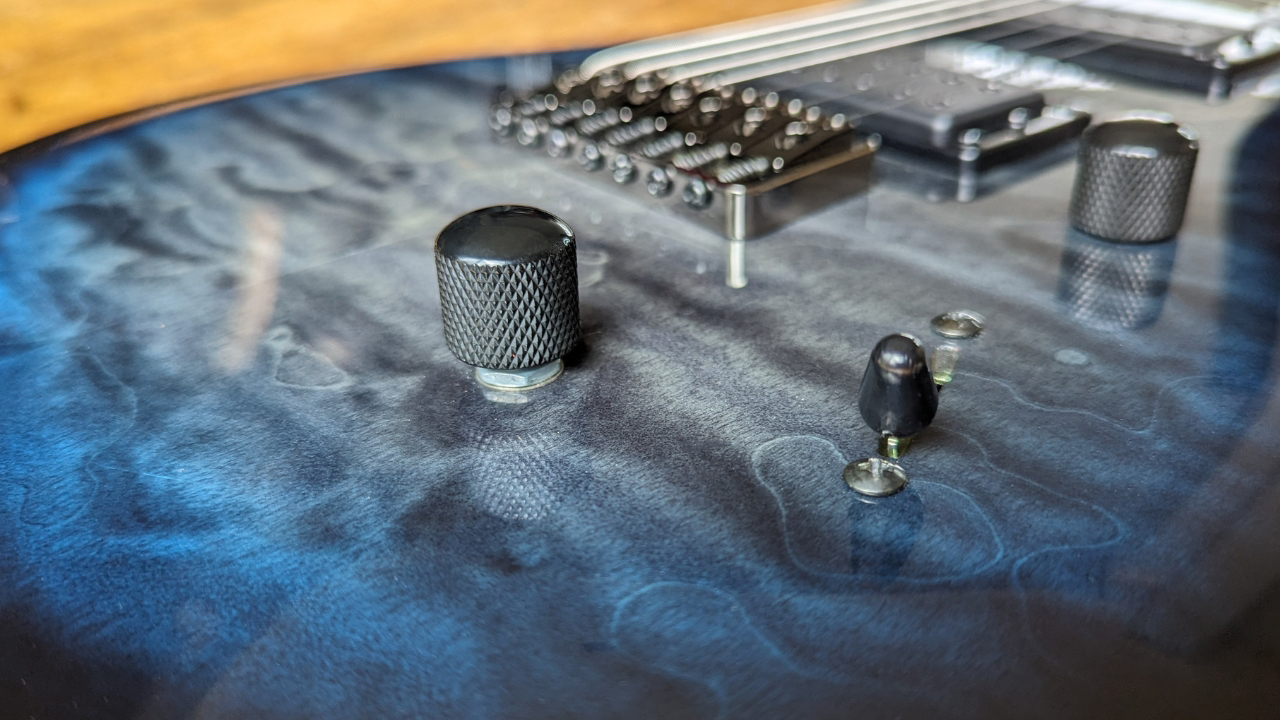
Taking the PRS SE Mark Holcomb SVN out of the box, the first thing I note is that it comes in a nice brown PRS gig bag with ‘SE’ embroidered across the front. It’s a more premium feel than your average included gig bag with plenty of pockets and a rugged overall feel. Unzipping it to pull out the instrument itself, I’m immediately taken with how the guitar looks.
Much like any PRS I’ve come across, it’s a stunner in the looks department. The Holcomb Blue Burst is not quite as gaudy as some of the PRS finishes, with a stealthy look about it that still implies hard metal riffing thanks to the combination of black, blue, and gray burst. The quilted maple top is finished exquisitely, and there’s a slight carve around the outer edges of the mahogany body that gives it a more luxurious feel versus some of the sharper designs of other guitars in this genre.
As you’d expect from a seven-string the set neck is chunky but still features PRS’ trademark wide-thin neck profile - more on which later. It’s a bound ebony fretboard, inlaid with the traditional PRS birds, 24 frets, and as with the body, all immaculately finished. A flat 20-inch radius fretboard features while the reverse of the neck is finished in satin, which gives you that ‘played-in’ feel without countless hours of playing. Despite a detailed scan of the guitar I could find no hint of a blemish or scuff anywhere on it, it’s impressive stuff.
All the latest guitar news, interviews, lessons, reviews, deals and more, direct to your inbox!
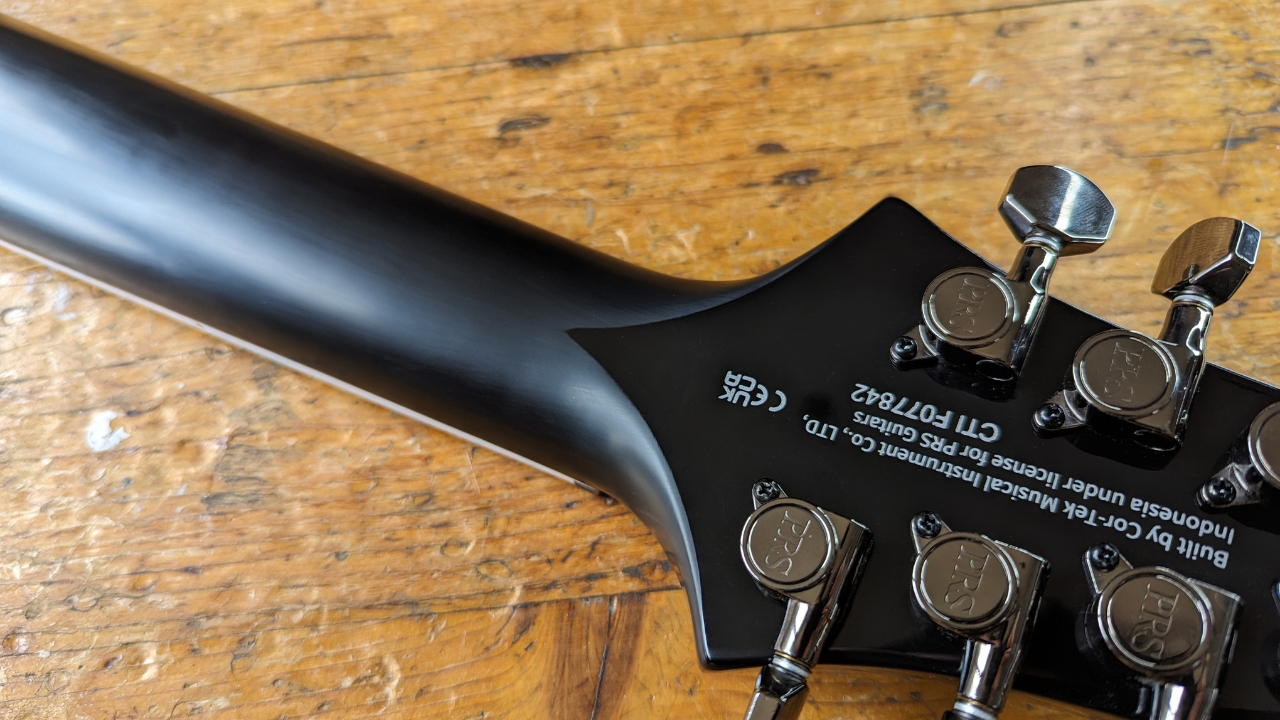
As you’ll find on the majority of extended-range guitars the SVN has a hard tail, ‘plate-style’ bridge designed by PRS, with strings going through the body to help with tuning stability. At the top end of the guitar, we have seven PRS-designed tuners, and all the hardware features a dark chrome design that looks very slick. It’s a simple setup, and exactly what you need from this type of guitar.
For electronics, you get two Seymour Duncan Mark Holcomb signature pickups. In the bridge position we have the ‘Scourge’ and in the neck position the ‘Scarlet’, names that hint at the character of each, which we’ll look at in-depth later on. A three-way blade switch paired with a single push-pull tone knob and single volume knob completes the lineup, implying added versatility from the off.
PRS SE Mark Holcomb SVN review: Playability
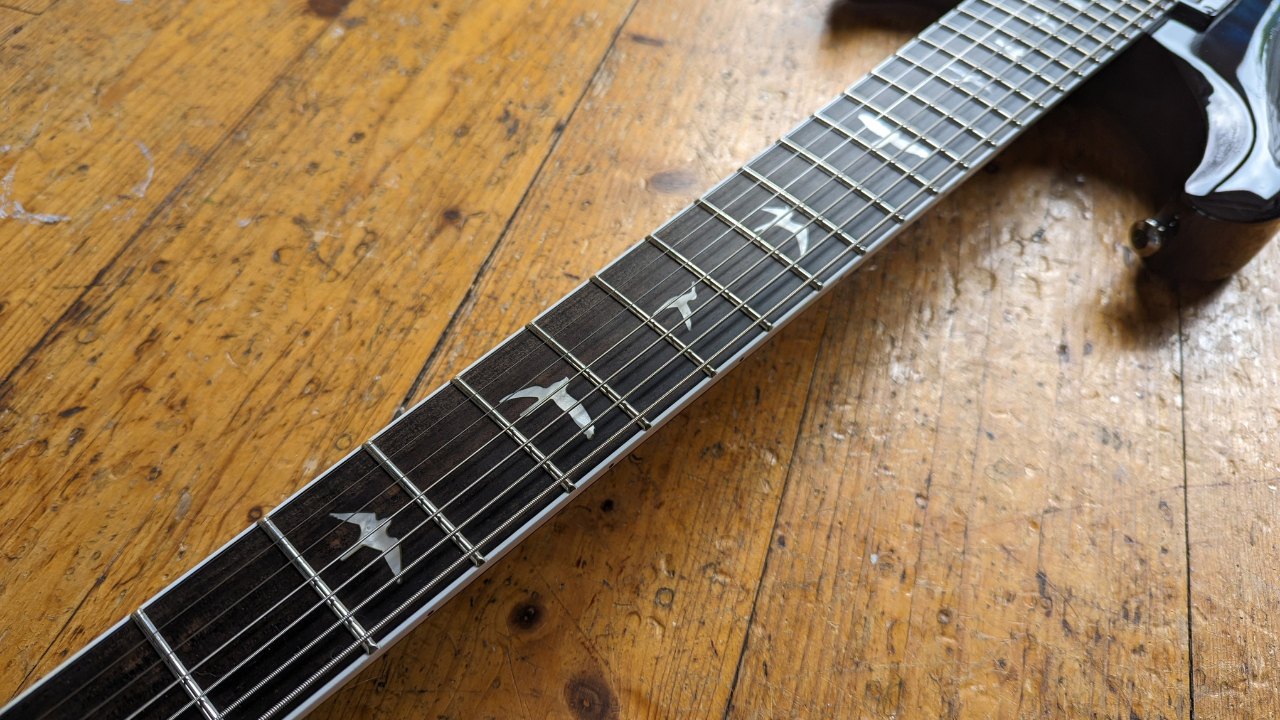
The neck immediately feels hefty in my fretting hand having been recently checking out a Harley Benton LP-copy, but within a few minutes of playing I’d largely gotten used to it. Compared to a Schecter 7-string I previously owned it certainly feels a lot more comfortable and less cumbersome than I was expecting, although it’s not quite as slinky as some of the Jackson 7-string necks I’ve played. That’s not a criticism though, I actually found myself loving the balanced feel of heft and fast playability in the neck.
On some 7-string guitars that extra string can really make a huge difference in feel, but here I ended up forgetting I was playing with an extra string – that was until one of my usual scale runs hit a bum note instead of a blue one. It’s a credit to the design of the guitar that it feels so effortless to play, despite being considerably larger than a regular six-string in all dimensions. The 26.5-inch scale length will feel comfortable for most players coming from a 25.5 or 24.75-inch scale length, and it’s a far cry from the ultra-long scales you find on many modern baritones.
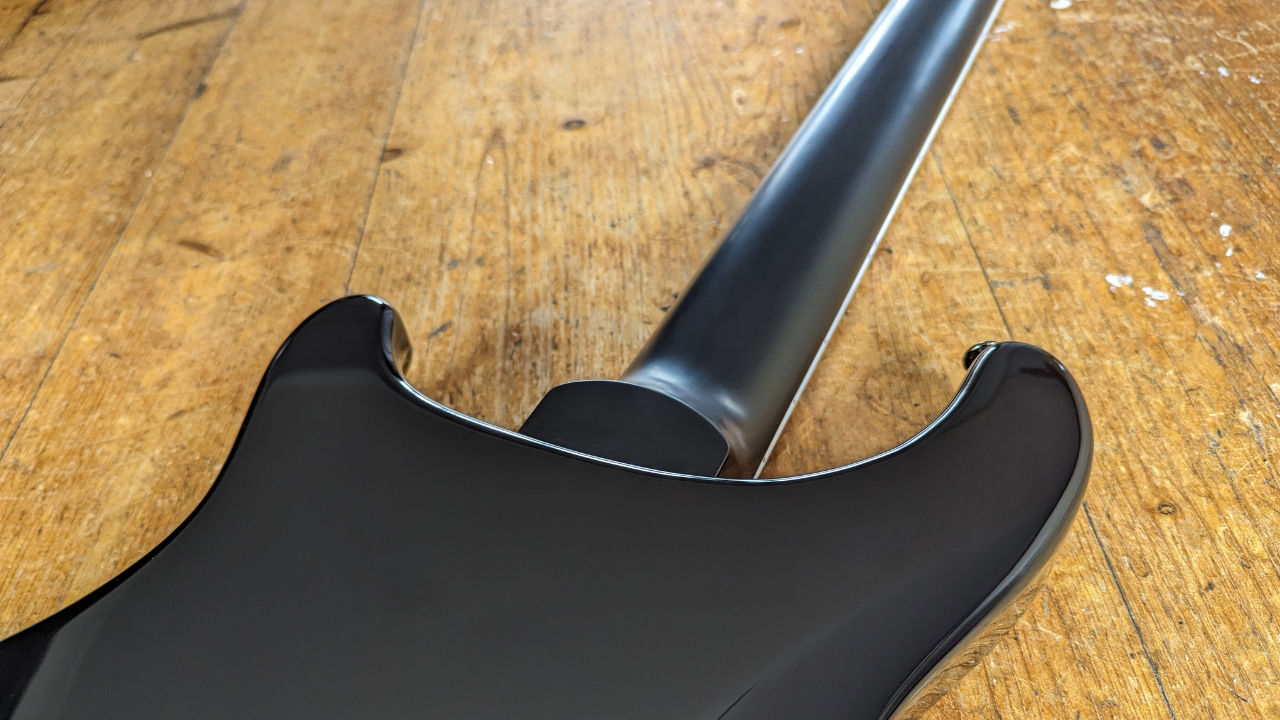
The satin finish on the reverse of the neck is a hit too. It feels ultra-smooth, contributing to the free-flowing playing feel of the SVN. It runs the gamut of the neck, even down to the neck heel, with the headstock end terminating with a split into a ‘v’ shape before returning the glossy finish on the headstock. Fretting chords or letting rip with legato heavy scale runs feels breezy thanks to that ultra-flat radius, and it doesn’t inhibit your bending either. It’s not quite Jackson or Ibanez shred slink, but certainly fast enough for anyone other than ultra-technical shredders.
PRS SE Mark Holcomb SVN review: Sound

The SVN features Mark’s latest signature Seymour Duncan pickups which were developed alongside the guitar itself as part of the improvements from the previous iteration. You’d be forgiven for expecting a pair of ultra-high output humbuckers considering the genre, but I was surprised to find the pickups have a lot more subtlety than expected.
In the bridge position there’s plenty of aggression, but it’s all delivered with articulation at the forefront. Those rhythmic, open-string djent stabs are my natural first point of call, and chugging that low string is a super satisfying experience. There’s a lovely balance of string tension too which makes bending even on the first fret nice and easy to perform, whilst keeping things stable enough for some Meshuggah-inspired riffing. The clarity is remarkable, even when playing chords running into a modeled Mesa Dual Rec with a ton of gain, the Mark Holcomb SVN stays clear.
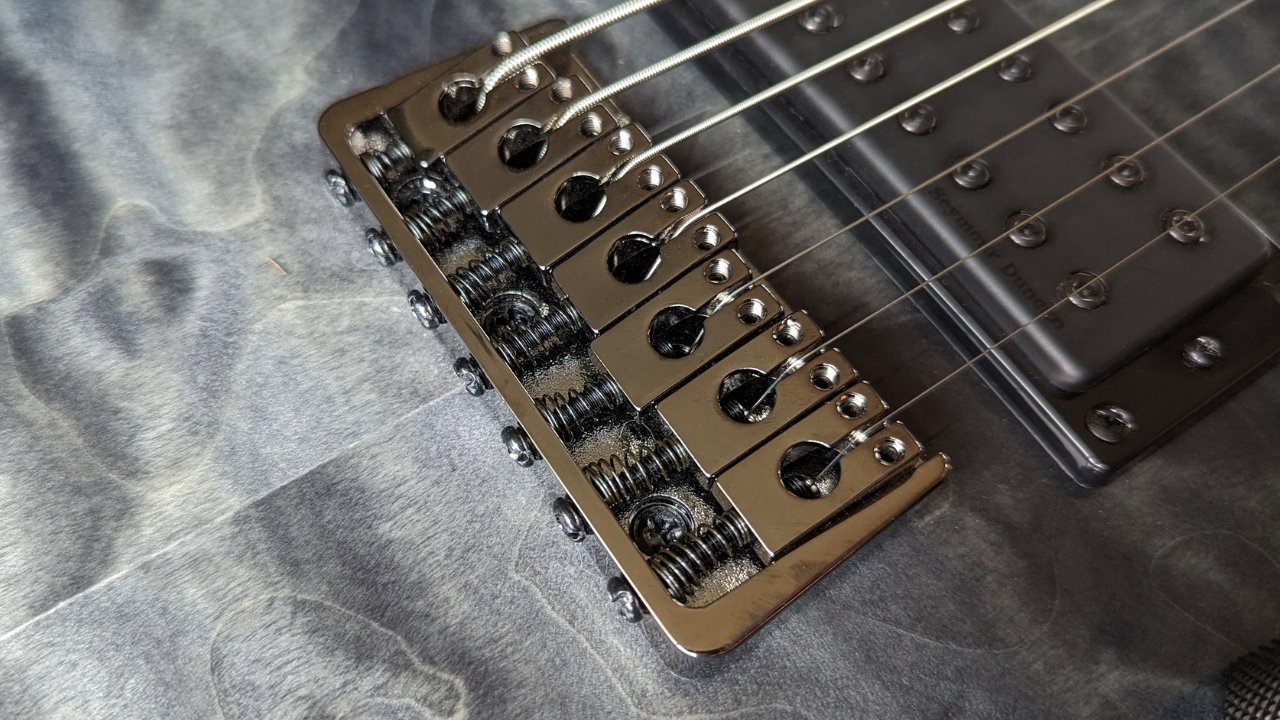
The neck pickup is the complete antithesis of the bridge position, feeling like a huge drop in output when we switch to it. It still sounds fat with a glassy, warm tone, but it’s much more geared towards mid-gain and clean sounds rather than the modern metal tone you might expect. It’s a pleasant surprise, although we can see some players expecting higher output being a little taken aback here. For me personally, it is nice having that different option, flicking the neck position for your clean tones and then back to the bridge when things need to get heavy again.
Overall the pickups sound gloriously open, reacting beautifully to picking dynamics and they completely shatter the expectations for a guitar geared toward modern metal. The coil-split option opens up plenty of tonal flexibility too. We wouldn’t call it Strat-style spank sound but it gives you far more options than you’d expect for a guitar whose looks scream chug and shred. These pickups hide a good lesson for metal players. More gain doesn’t necessarily give you a heavier sound, instead precise picking and articulation with lower gain will deliver you all the chunky guitar tones you need.
PRS SE Mark Holcomb SVN review: Verdict
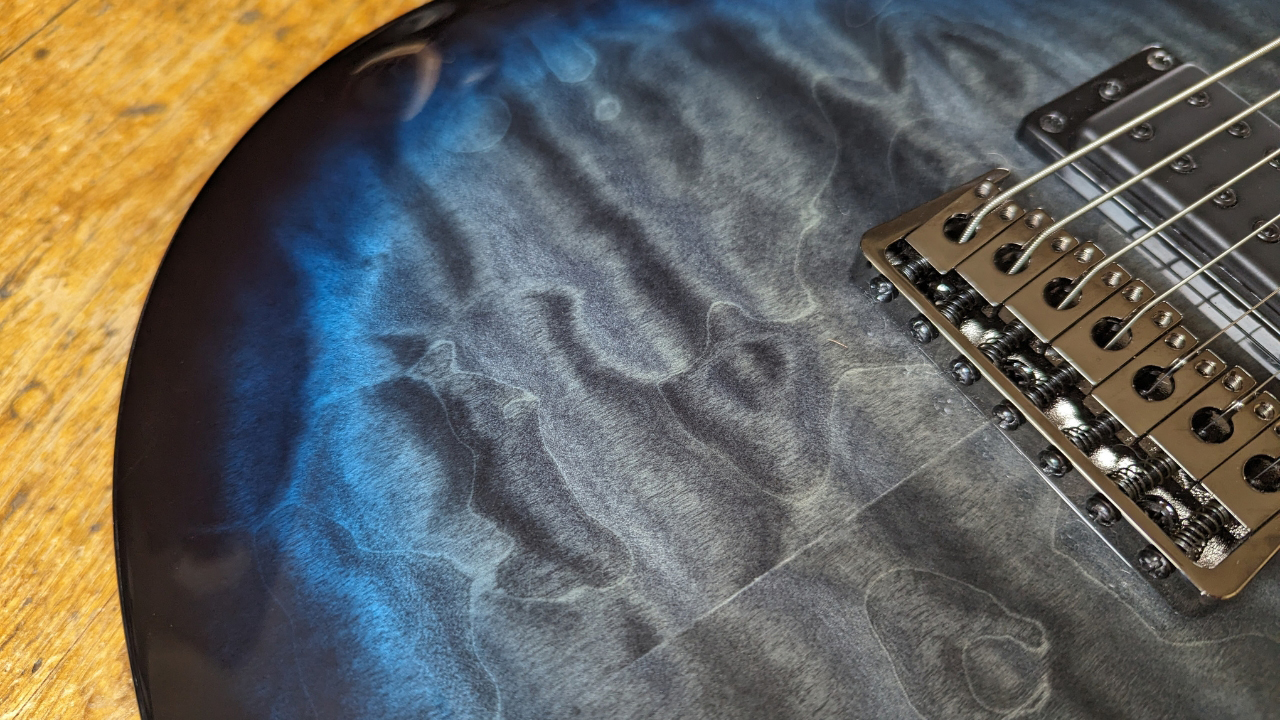
If you’re in the market for a versatile 7-string that can handle lots of different tonal duties, we can’t think of many that do it better than the PRS SE Mark Holcomb SVN. From the stunning-looking finish to the ultra-comfortable neck, you can tell a lot of work has gone into designing this guitar to make it player-friendly, and it’s got a surprising amount of depth to it thanks to those signature Seymour Duncan pickups.
Combined with the classic PRS quality control and attention to detail with the SVN you’re getting an instrument that looks, plays, and sounds incredible. It’s undoubtedly one of the best 7 string guitars I’ve gotten my hands on, and although it doesn’t feel quite as fast as some of the offerings from Jackson and Ibanez, if you want something that’s more than just a high-gain shred machine you won’t find much better than this.
PRS SE Mark Holcomb SVN review: Specs
- Body: Mahogany with quilted maple top
- Fingerboard: Bound Ebony
- Fingerboard Radius: 20"
- Pickups: Seymour Duncan Mark Holcomb "Scourge" (bridge), Seymour Duncan Mark Holcomb "Scarlet" (neck)
- Tuners: PRS Designed Tuners
- Scale Length: 26.5”
- Nut Width: 47.4mm
- Neck Width: 47.5mm (nut), 59.5mm (12th fret)
- Neck Depth: 21.4mm (1st fret), 24.2mm (12th fret)
- String Spacing: 40mm (nut), 62.5mm (bridge)
- Contact: PRS

Matt is a Junior Deals Writer here at Guitar World. He regularly tests and reviews music gear with a focus on guitars, amps, pedals, modelers, and pretty much anything else guitar-related. Matt worked in music retail for 5 years at Dawsons Music and Northwest Guitars and has written for various music sites including MusicRadar, Guitar Player, Guitar.com, Ultimate Guitar, and Thomann’s t.blog. A regularly gigging guitarist with over 20 years of experience playing live and writing and recording in bands, he's performed everything from jazz to djent, gigging all over the country in more dingy venues than you can shake a drop-tuned guitar at.
